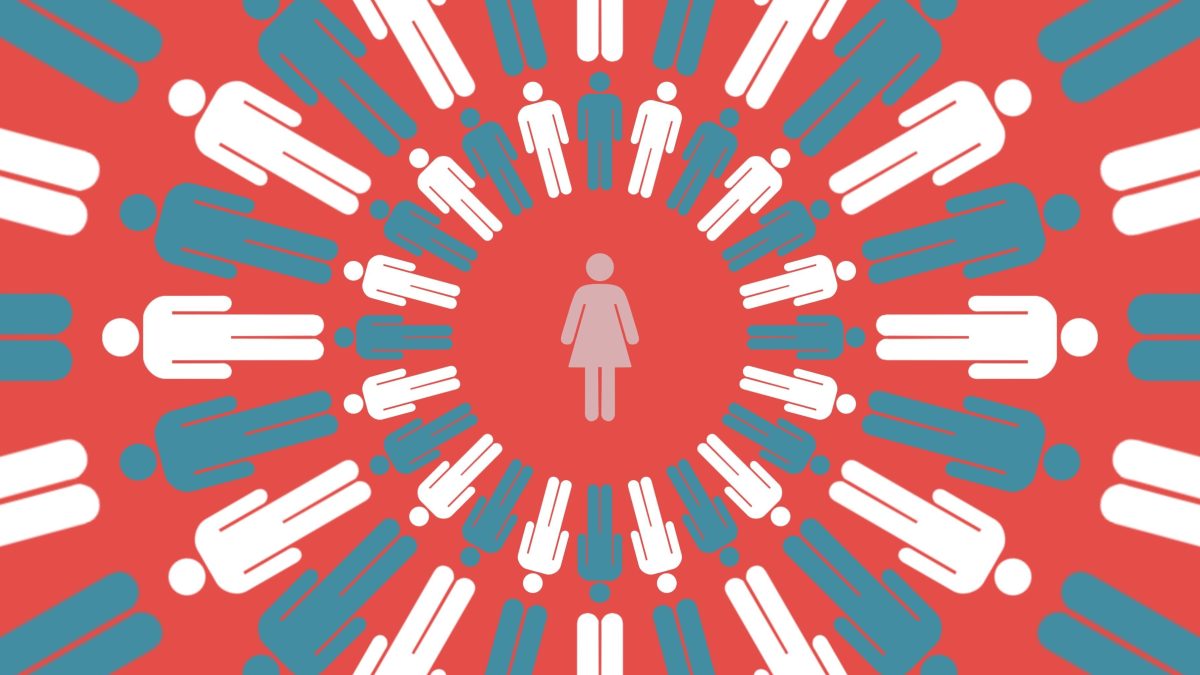In the third century BCE, Aristotle described the female body as an incomplete male body: deformed, with its genitalia “turn’d outside in.” He considered women defective by nature; the female body merely a deviation from the ideal male model.
Medicine, from its earliest stages, has absorbed and enforced the belief that women are inferior versions of men. It has, throughout its history, reinforced culturally constructed gender divisions. The result: a male-dominated system which, even today, marginalises women and downplays their suffering. Being personally and intimately aware of the material impact of medical misogyny, and convinced the solution ultimately hinges on discourse and active consciousness, I’d like to explore the gender health gap for the third instalment of my column.
The ‘inferiority’ of the female body was cemented into the very foundations of medicine laid down in ancient Greece. Women possessed an organ of great mystery and huge biological and social value: the uterus. Greek physicians were obsessed with the uterus. Possession of this ‘curious’ organ came to define the purpose of women. Being biologically female defined – and restricted – what it meant to be a woman. Women’s medical pathologies were constantly related back to the ‘mysteries’ of her reproductive organs.
The ‘wandering womb’, for example, was a belief first attested in the medical texts of ancient Greece, which maintained that the cause of many illnesses in women was a ‘wandering’ uterus. The uterus was likened (by none other than the great philosopher Plato) to an irrational animal wandering around the body, capable of causing illness and ‘hysteria’. The threat of a wandering womb was used to subjugate women – for example, one prescription for a ‘displaced uterus’ was to be pregnant as often as possible in order to keep the womb in its rightful place.
Though we’ve come a long way from wandering wombs, gender myths are still ingrained in medicine, and influence the care and diagnosis of people who identify as women.
For example, though ‘hysteria’ is no longer a valid medical diagnosis, there remains a trend of mass invalidation when it comes to women and their pain. A seminal 2001 study found that women are far more likely than men to have their pain reported as ‘psychogenic’ and ‘not real’. It also found that when in pain, women are more likely to be given sedatives or antidepressants, while men are more likely to be given painkillers.
Prevailing perceptions of women as over-emotional and myths about the way women experience and tolerate pain underpin the health-care system’s failure to adequately acknowledge and treat women’s pain. And these myths lead to high rates of misdiagnosis and delayed care: women are, for example, less likely than men to be referred for testing if they complain of cardiac symptoms, and are 50 per cent more likely than men to be given an incorrect diagnosis following a heart attack – both men and women experiencing a heart attack who are initially misdiagnosed have a 70 per cent higher risk of dying.
Women also consistently receive diagnoses later than men. One study found that women are, on average, diagnosed four years later than men, including 2.5 years later in the case of cancer, and 4.5 years later in the case of metabolic diseases such as Type 2 diabetes. And this is only in the arena of general medicine – female-specific illnesses, such as endometriosis (which affects one in ten women), are still chronically underdiagnosed and misunderstood. It takes, for example, an average of 7.5 years from the onset of symptoms to diagnosis of endometriosis.
Another gaping information vacuum exists around menopause – and exists, says gynecologist and author Jen Gunter, due to medical misogyny. Medicine’s history of neglect when it comes to women’s health means that menopause concerns are often dismissed and overlooked. Though menopause brings an increased risk of diseases such as osteoporosis, dementia, metabolic syndrome, type 2 diabetes, and urinary tract infections, women and healthcare practitioners alike are generally still painfully uninformed about menopause and HRT. Wrong prescriptions and a lack of medical training speaks to a lack of interest in something that half the world’s population will go through.
There is also a long and painful history of the exclusion of women from medical trials. Men are easier and cheaper test subjects, as they do not have monthly fluctuations of hormones which can affect how drugs are metabolised – which is of course exactly why there needs to be drug trials designed with sex-based criteria. Unfortunately, the development of drugs is privately funded by pharmaceutical companies whose priority it is to make a profit… For context, although women metabolise drugs differently to men 40% of the time, 80% of animals used in trials of potential new drugs are male. Furthermore, a study found that eight out of ten prescription drugs withdrawn from the market in a four-year period were found to post greater risks to women.
The discrimination women encounter as patients is multiplied if they are women of colour, poor women, or people who don’t conform to gender norms ascribed by medicine to biological womanhood. Black women in the UK, for example, are four times more likely to die in pregnancy and childbirth than white women.
Medical misogyny rears its head in countless other ways – such as the fact that women are 32% more likely to die if a man, rather than a woman, operates on them. If I were, however, to document every facet of misogyny present in modern scientific medicine, this would be a book rather than an article. As for the solution? Talking. Consciousness. Medical self-advocacy. In the words of author Elinor Cleghorn: “No unwell woman should be reduced to a file of notes, a set of clinical observations… Medicine must listen to and believe our testimonies about our own bodies and ultimately turn its energies, time, and money toward finally solving our medical mysteries.”

